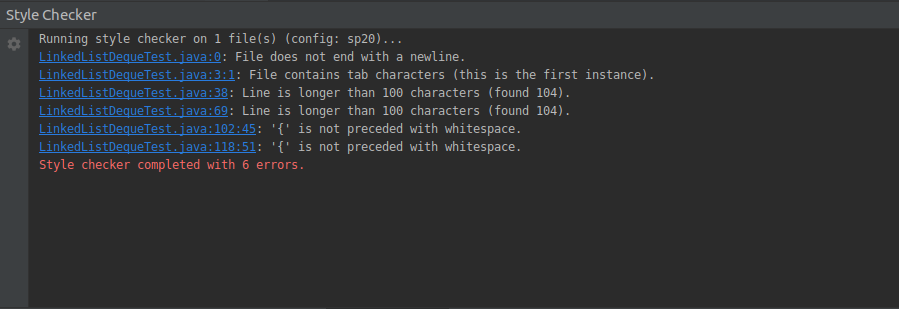重点是Java中数组的特点,以及对数据结构细节实现的思考。
概要
- Reading2.3:
- 着眼于删除链表结点的问题,追求操作的简便与快速,讲述了更多有关链表操作的细节。
- 简要介绍Java中泛型的用法
- Reading2.4:
- Java中数组的基础用法(其中System.arraycopy方法比较常用)
- 二维数组基础
- Class与Array对比
- Reading2.5:
- 数组队列中resize方法的分析
- why null all objects
概念
Class and array
- array能在运行时制定访问哪个成员,如int i = …, a[i]
- Class不能,如String s = “item”, p.s会错误
Reflection
- 利用反射可以在运行时确定访问的成员,但:
- Don’t use it because of bad coding style
一些感受
ArrayDeque:
- 想到一种好的结构能帮你省很多时间。(例如我把first、last作为哨兵结点(也可以不是)、resize时仅仅是遍历后赋值)
- 理清逻辑顺序很重要。
- 数据结构还是要画图分析比较好。
- Project后的tips很有启发性。
Tips
各种各样重要的细节
Appendix: Java Arrays vs. Other Languages
Compared to arrays in other languages, Java arrays:
- Have no special syntax for “slicing” (such as in Python).
- Cannot be shrunk or expanded (such as in Ruby).
- Do not have member methods (such as in Javascript).
- Must contain values only of the same type (unlike Python).
AList
- Advantage: faster get than linked-list.
- Rule: Any change to our list must be reflected in a change in one or more memory boxes in our implementation.
- Resize: newSize = oldSize * Factor.
We’ll defer a full analysis(均摊分析) of why this happens until the final chapter of this book. - Memory performance:
In a typical implementation, we halve the size of the array when R falls to less than 0.25.
Generic problems:
There is one significant syntactical difference: Java does not allow us to create an array of generic objects due to an obscure issue with the way generics are implemented.
Make null and remove:
Whereas before, we had no reason to zero out elements that were deleted, with generic objects, we do want to null out references to the objects that we’re storing. This is to avoid “loitering”.(所以对于数组来说,某个储存空间没有引用就是值为null?)

